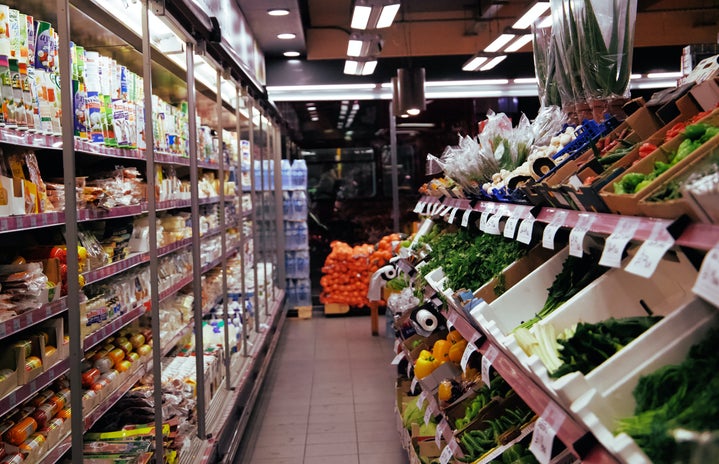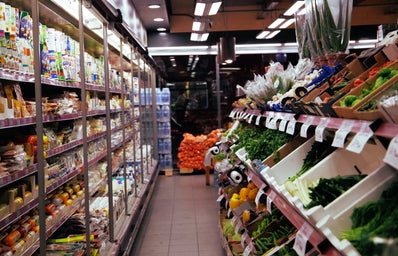April’s inflation achieves 1,06%, being the highest variation for the month of April since 1996 and almost 1% higher than last year. Food and drinks, transportation and energy are the most impacted categories. This index affects directly on the purchasing power of the population.
What is inflation?
A very simple, but still effective explanation, is to say that inflation is the measure of the variation in prices of products and services consumed by the population of its country.
In Brazil, the federal organization that takes responsibility for calculating these variations is named Brazilian Institute of Geography and Statistics (IBGE, acronym in Portuguese). The institute presents a monthly study made in 13 urban areas of the country, analyzing approximately 430 thousand prices in distinct regions.
All of the prices are compared to the numbers calculated in the month before, resulting in a unique value that reflects the general variation of the consumer prices in the period. The categories of products and services analyzed include: transportation, food and drinks, dwelling, medical expenses, communication, education and clothing.
The result of the monthly study presented by IBGE is named Consumer Price Index (IPCA, acronym in Portuguese). This index is officially considered by the government, which is the reference for inflation goals and modifications on the interest rates.
What does IPCA reflect?
Much deeper than only showing if the prices have increased or lowered from month to month, IPCA reflects the impact that this variation has on the country’s economy, and therefore, on the purchasing power families, basically, the income.
When prices variate, so does the cost of living of a family. In April of 2022, products and services have increased their value by 1,06%, totaling 12,13% in the last 12 months. Since there is a widespread increase, the purchase power of citizens has lowered. Meaning, the Brazilian currency has lost value.
Once everything becomes more expensive, a sinking spiral begins to take place in the country’s economy. The consumption decreases, and for that reason, so does the production. The biggest issue that it provokes is the decline of services, in other words: bankruptcy and unemployment. On that account, the country entered in an economic recession.
Brazil has been under the spot of an economic stagnation for a long time now. The population has been struggling to attend to its basic needs because of inflation, and the prices are disturbing businesses. Luiz Gomes, a businessman who sells fruits at Paulista Avenue, in São Paulo, explains that “the prices have increased a lot, especially because of the fuel. The fruits come from the countryside of the state and also from the states of the North of the country, so truck drivers have raised their products’ value. That impacted very much, because I had no option but to increase the prices of my products, and then, it is hard to keep my business when people are consuming less”.
Food and drinks, transportation and energy are the most impacted categories by the increase of prices. In an interview conceded by Gustavo Andrade, economist that works at National Economic and Social Development Bank, a federal public company in Rio de Janeiro, presents the reasons for this disproportion: “In the case of food and drinks, it is noticeable that a lot of products are commodities negotiated in the international market. Therefore, products such as soy, corn, wheat and meat are priced in dollars. On that account, they can be affected by the variation of the exchange rate or by the appreciation and depreciation of the commodity in the international market. Besides that, food also suffers relevant climate impacts, due to periods of droughts, torrential rains, blights etc”.
“Transportation is related to the exchange rate of petrol, which is also a commodity and is priced in dollars. Then, it is comprehensible that transportation becomes more expensive when the exchange rate increases. In addition, part of the public transportation services adjust its tariff based on the last inflation index. In other words, even though fuel does not suffer any variation in price, bus and subway fare can increase due to the general inflation of the economy. Lastly, there is energy. In Brazil, a great portion of the power generation results from our hydroelectric plants, which may also be impacted by the rain regime. When reservoirs are low, the energy production reduces. That being the case, thermal plants are put to work and their cost is more expensive”, completes Gustavo.
To understand what causes inflation, it is fundamental to understand that, when it comes to the goods and services market, inflation must be the one to balance the supply and the demand of products and services. “Inflation always arises as a consequence of an imbalance between both of these variables. Meaning, a decline of supply and an expansion of demand lead to an increase in prices. Otherwise, if there is a decline of demand and an expansion of supply, inflation damps”, says Gustavo.
It is not unusual for prices to overcome wages in adverse moments, forcing families to reduce their consumption pattern. Therefore, people started changing a few of their habits. They are still able to afford food, transportation and household and personal care expenses, but spend more to do that and if the inflation continues for a long time, families just stop buying in the same volume. As always, who ends up being more intensely affected and struggling even more with financial problems is the poorest population.
Inflation and interest rates: How the government control the widespread increase
The economist Gustavo Andrade clarifies the relation between inflation and Selic: “When the Central Bank highers the basic interest rate, the profitability of the securities indexed to it also modify and, consequently, the capitation cost of banks. Once Selic is higher, the banking capitation cost increases and, therefore, loans get more expensive. Accordingly, it is noticeable that the demand for goods and services declines, reducing inflation. In case Selic decreases, the process is the inverse, leading prices to rise”.
Although controlling the basic interest rate is the most effective way to monitor inflation, in a long period of time, the government fiscal policy exert an important role over this monitoring. “On one hand, governments that maintain balanced budgets tend to assure a propitious environment for the stability of prices. On the other hand, governments that spend more than they take in, tend to overly encourage the demand for goods and services – put a great amount of money into the economy, by a monetarist view. In that way, inflation increases and the Central Bank must also increase Selic to offset the irresponsible fiscal policy of the state”, explains Andrade.
Is inflation always a red flag?
The rise of prices can sinalize different things that must be analyzed considering the context of each situation. “When the variation is at a low and positive level ( approximately 2% or 3% ), it is a natural reflection of a balanced and functional economy. Otherwise, when the variation is at a high level, it is a reflection of a country with structural imbalances. In that case, there is a big uncertainty over the economic perspectives, reducing company investments and increasing unemployment”, says the economist.
Once the inflation index of the last 12 months has achieved 12,13%, it is fair to affirm that Brazil is going through structural problems, which were also accentuated due to the pandemic and the Ukraine war.
Covid-19 and Ukraine War: how did they play a role in the brazilian economy
Both the pandemic and the Ukraine War disrupted the global production chains. During the pandemic, at different moments in time, distinct regions of the globe entered into lockdown and this misalignment impacted the supply of productive inputs. “The pandemic brought expansionary monetary policies that led to an increase of demands as the health situation normalized. Currently, we are experiencing a period of contractionary monetary policy while the production processes normalize. The war in Ukraine and the lockdown are recent episodes that disturb this process”, explains Gustavo Andrade.
A lot of people are concerned that Brazil could experience hyperinflation just as the country did go through a few times historically. A hyperinflation is the name given to inflation that reaches proportions above the levels considered adequate (in general, when its index is maintained above 50% a month ). This scenery was experienced in 1988, 1989, 1990, 1992 and 1993.
“At the moment, we are still far from a hyperinflation scenery. I personally do not believe that our governors will commit the same error from the past, especially because inflation is a great reducer of popularity of politicians. For now, Brazilian inflation is relatively aligned with the rest of the world and the projections of the Central Bank point to a reduction of this indicator in 2023 and 2024. People have credibility in the Central Bank, which ends up increasing the predictability and supporting the economic activity”, says Andrade.
But the economist says that it is very hard to tell when everything is going to be normal again. The only thing to say is that the inflationary scenery is enduring longer than specialists could predict and the main victim of it is the people, especially, the poorest population.
————————————–
The article above was edited by Camila Nascimento.
Liked this type of content? check out Her Campus Casper Libero for more!


